Nowadays you can have any type of fruit of vegetable you want any time of year. However, eating in season not only tastes better, but also have more nutritional value! In winter when we are more prone to sickness, this is more important than ever.
Personally I love eating with the wheel of the year. It makes me feel more in touch with Earth and the current moment. It’s also much closer to how humans ate before the mass production of food.
This post contains links to products that I have researched or used that I think you would enjoy based on the article you are reading. I used to be an Amazon Affiliate to receive a commission. I am no longer apart of the program but I still wanted to share these products because I truly believe in them and think they will come in handy! Using my links to purchase is no extra cost to you!
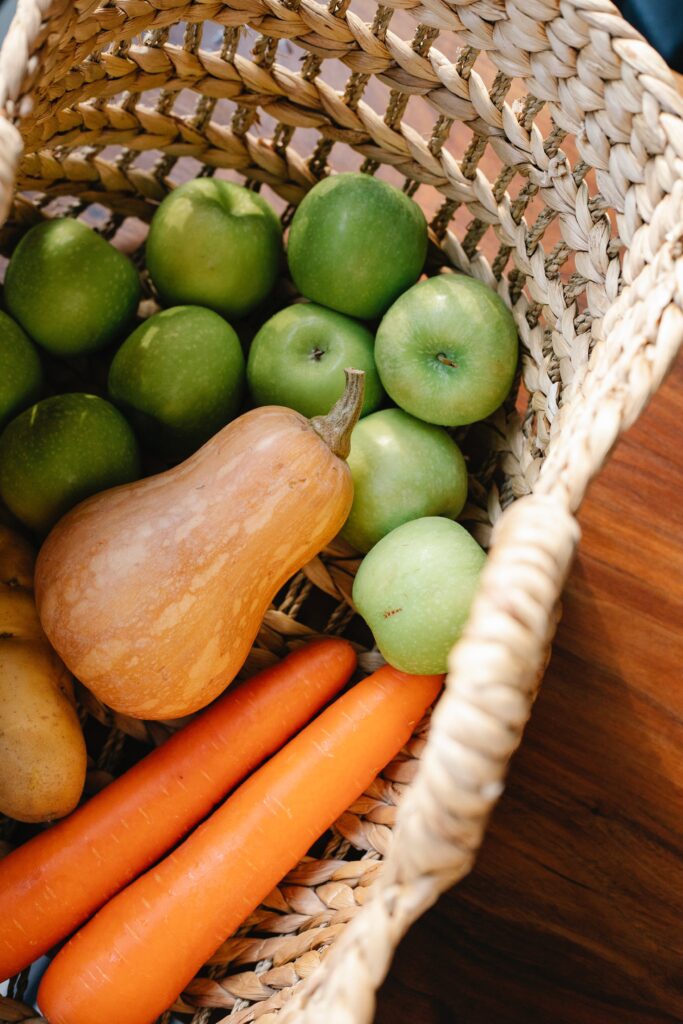
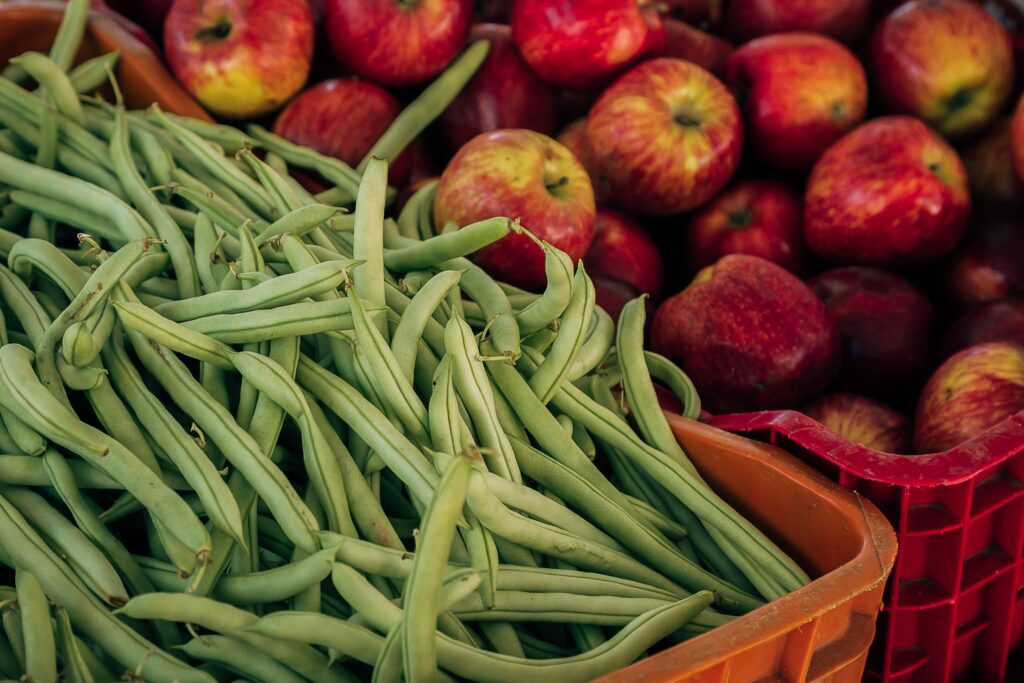
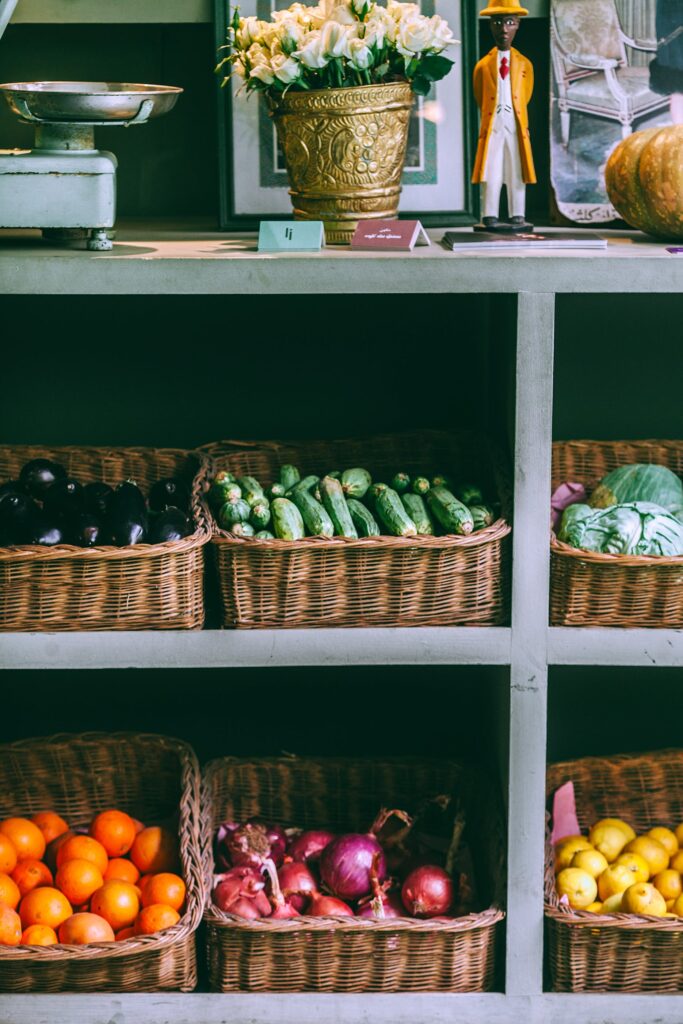
OTHER BENEFITS OF EATING IN SEASON
- You will support local farmers. – Buying in season means that you will be buying locally, which will support your community.
- They taste better. – Since in season produce is grown locally it can fully ripen before being picked giving it a better taste.
- There are more nutrients. –Being fully ripened will not only make it taste better but be better for you!
- They are less expensive. – No extra costs from shipping the product, meaning you get to spend less on your groceries.
- It’s better for the environment. – Out of season fruit has to be shipped from areas where it is in season, which is why it’s usually picked before it’s prime in order to be in the stores before it rots.
How to know what’s in season near YOU:
But with everything available at once, how do you know which ones are in season? I’ve done the research for you and have compiled a list month by month through the winter season of what fruits and vegetables are thriving.
Of course depending on where you live it will affect what is in season to your region, so some things may vary. For instance, this list is specific for Texas, where I live. However harvesting times are similar in other locations.
That’s also why you’ll notice that I have some fruits and vegetables missing from this list. There are some produce items that are not grown in Texas at all, so they must still get shipped out from other states, or countries for it to be available to us therefore defeating the purpose of eating in season.
Personally, I’m still going to buy some things that aren’t seasonal to where I live, but I like knowing what are so that I can include them into my diet.
My information was gathered from seasonalfoodguide.org where you can also go and get information on seasonal food for anywhere in the United States.
WINTER FRUITS
Fruits come from the flowering part of a plant and contain seeds. However for the sake of this article I will be classifying fruits with their culinary classification associated with sweet and tart flavors to make it easier when deciding on your grocery list. Sometimes I’m afraid to buy fruit because I’ll forget about it and it might ago bad. I don’t like to be wasteful! Amazon however has these amazing Fruit and Veggie Storage Containers with Removable Colander for Easy Washing that keep your fruit (and veggies!) fresh and ready to eat all winter long.
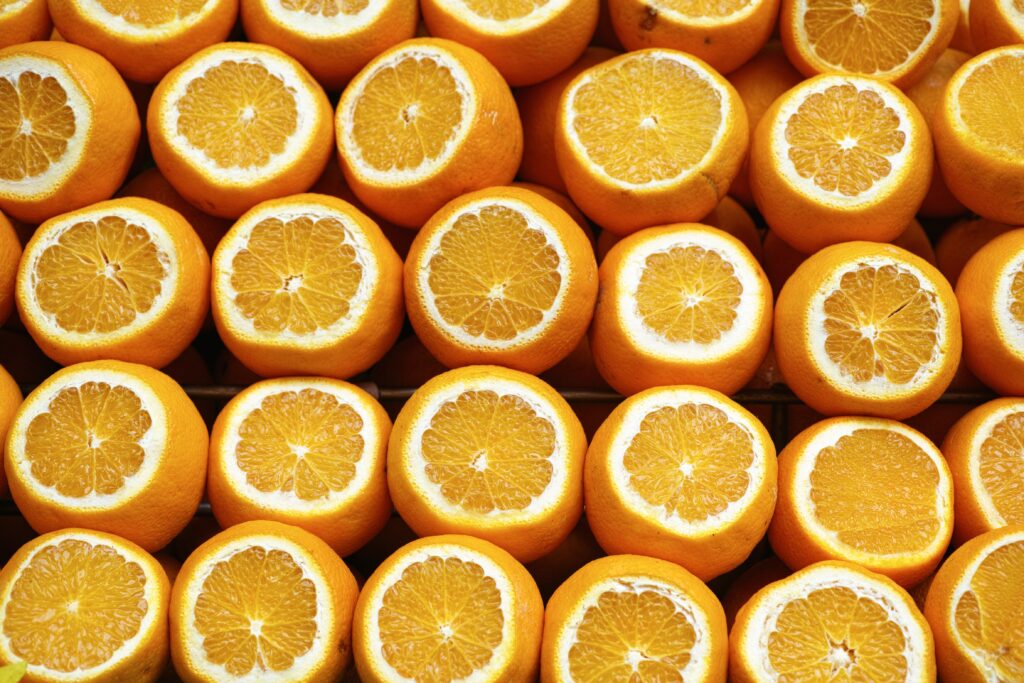
Pomegranates
[October through December]
Pomegranates are one of my all time favorites! They are at their best at the beginning of winter, and are full of fiber, antioxidants, potassium, and vitamin C. They can be a little difficult to eat but I personally love that it makes me take my time and eat intentionally. It’s also very helpful when I’m in the mood to snack but I’m not super hungry because it takes me awhile to get through it.
Oranges
[September through April]
Enjoy oranges all winter long! Like all citrus fruits, oranges thrive during the winter months. They are a super easy and sharable snack that are high in vitamin C, calcium, and fiber.
Mandarins
[September through April]
Enjoy all winter long! Similar to oranges but smaller and easier to peel. They contain powerful antioxidants and are high in vitamins A, B and C as well as fiber.
Tangerines
[September through April]
Enjoy all winter long! Like Mandarins, Tangerines are also similar to oranges but smaller and easier to peel. They however, have a stronger taste with a tart edge. Tangerines are high in vitamin A, iron, and of course, fiber.
Lemons
[September through April]
Enjoy all winter long! They are, of course, high in vitamin C and fiber. I love adding lemon to my sea food dishes, or even as a pallet cleanser. I also LOVE putting it in my water. This is especially helpful in keeping me hydrated especially during the colder months. I struggle with remembering to drink enough water so anything helps!
RELATED: How to Drink More Water – 8 Signs You’re Dehydrated
Grapefruits
[October through May]
Like all citrus fruits grapefruits are high in fiber and vitamin C in addition to being able to enjoy them all winter long. They also contain good amounts of vitamin A and potassium. They are a bit bitter so I usually sprinkle some sugar on them for taste.
Pummelo
[October through May]
I had never heard of this fruit before so I’m very excited to try this! Enjoyable all winter long, it’s like a giant grapefruit but bigger. They contain vitamins A and C and tons of fiber.
Strawberries
[February through April]
I usually think of summertime when I think of strawberries but they actually come in right at the end of winter, just in time for Valentine’s Day! Along with vitamin C and fiber, strawberries are also full of folates and niacin which help with fatigue and mental wellbeing. If you’re like me and suffer from Seasonal Depression, it’s certainly good to know what little things you can do to perk up your winter.
RELATED: How to Combat Seasonal Depression
WINTER VEGETABLES
Vegetables are the edible parts of a plant such as the leaves, stem, roots, and bulbs. However, as stated above, we will be listing by their culinary classification of savory and bitter flavors. Easily chop and add vegetables to any dish with this Vegetable Chopper from Amazon! One thing that stops me from eating better is usually convenience, so by making eating healthier options easier for me, the more likely I am to stick with it.
Cabbage
[Year Round]
Cabbage is rich in vitamin C, fiber, and vitamin K. They are also linked with the improvement of digestive health. I personally love adding cabbage to my stews, which are obviously perfect for winter!
Lamb’s Quarters
[Year Round]
Lamb’s Quarters is also known as “wild spinach” and can be eaten similarly, either raw or cooked. However, it has more iron, protein, vitamin B2, and vitamin C than spinach. I had never heard of this before so I’ll definitely be adding this into my winter salads.
Mushrooms
[Year Round]
Mushrooms are low in calories and high in water content, keeping you hydrated and full. They’re also great for gut health! There are so many different types of mushrooms, all with various benefits, tastes, and textures. Therefore you should shop around and experiment to find what suits your pallet the best.
Purslane,
[Year Round]
Surprisingly, you may be able to find this vegetable right in your backyard! Most people view purslane is as a weed, but it’s actually a secret superfood! Lemony in flavor, it is full of Omega-3 fatty acids, vitamin A, C, and B complex as well as iron, calcium, magnesium, and potassium. *Note: Avoid if you are pregnant or someone who is prone to urinary stones because it contains oxalic acid. You can eat it cooked or raw.
Turnips
[Year Round]
The original jack-o-lantern! Before we used pumpkins people would carve out turnips during Halloween to ward off evil spirits.Chop some up raw for your salad or roast them in a stew. Turnips are extremely versatile! They are also high in vitamin K, A, C and E as well as calcium, potassium, and fiber.
Cucumber
[April through December]
Enjoy best at the beginning of winter. Commonly thought of as a vegetable even though it does have a slightly sweet cool flavor, and it is a fruit. The high water content will help you stay hydrated as the cold comes in. Cucumbers are high in vitamin K and full of antioxidants.
Green Beans
[April through December]
Enjoy best at the beginning of Winter. This superfood is great for holiday dishes. Green beans are full of fiber, folates, calcium, iron and vitamins K, A, and C, along with countless other benefits that would be too long to list!
Bell Peppers
[May through December]
Enjoy best at the beginning of Winter. Bell peppers are an excellent source of vitamin C and A. They are full of fiber and antioxidants. Pick red peppers for the most nutrition. They are also a fruit that is commonly associated with vegetables.
Leeks
[August through December]
Enjoy best at the beginning of Winter. Leeks have a mildly sweet flavor similar to onions and chives and usually used in the same manner as a base in other recipes, however they can be enjoyed by themselves. They are high in vitamin K, C, and B6 as well as iron and manganese.
Sweet Potatoes
[August through May]
Enjoy all winter long. Sweet potatoes are a staple during the holiday and with good reason! Packed with vitamins A and C plus protein and fiber.
Rutabaga
[September through December]
Enjoy best at the beginning of Winter. Rutabagas are a root vegetable with a slightly less sweet carrot taste when raw. They taste similar to potatoes when they are cooked but with half the calories and carbs and four times the fiber! Not to mention all the vitamins and minerals.
Chicories
[September through December]
Enjoy best at the beginning of Winter. Similar to Lettuce but heartier and more bitter. They are usually eaten raw but can also be cooked. Chicories are great for gut health and are full of tons of vitamins and minerals.
Endives
[September through December]
Enjoy best at the beginning of Winter. Endives are another bitter-tasting salad green. They are full of potassium, fiber plus tons of vitamins and minerals.
Nopales
[September through December]
Enjoy best at the beginning of Winter. Nopales are cactus leaves! They have a fresh green, grassy flavor similar to asparagus and are full of potassium, magnesium, and calcium not to mention all the vitamins and minerals.
Radicchio
[September through December]
Enjoy best at the beginning of Winter. Commonly mistaken for red cabbage, Radicchio is a leafy chiccory with a bitter taste. Goes particularly well with Italian dishes. High in vitamin C and E.
Rapini/Broccoli Rabe
[October through February]
Enjoy all winter long. Full of vitamins, minerals and antioxidants, Rapini has a sharp bitter nutty flavor. Rapini is preferred cooked but can be eaten raw as well.
Salsify
[October through February]
Enjoy all winter long. Usually eat cooked, salsify has a slightly sweet taste with an oyster taste. Great addition to winter stews and soups. It is also great for your immune system which is a helpful addition in the colder months.
Brussels Sprouts
[October through March]
Enjoy all winter long. Brussels sprouts are high in potassium and vitamin C, and have a bitter taste that can be sweetened when roasting or sautéing.
Collard Greens
[October through April]
Enjoy all winter long. Another known holiday side favorite, collard greens have a bitter taste that mellows when cooked bringing out an early flavor. They are full of antioxidants and folate.
Horseradish
[October through April]
Enjoy all winter long. Horseradish is a spicy root vegetable that is commonly ground down to make a sauce that’s great on anything from burgers to fish. Plus they are high in antioxidants.
Parsnips
[October through May]
Enjoy all winter long. Parsnips resemble carrots but with more vitamin K and have a more similar taste with sweet potatoes.
Beets
[October through December]
Enjoy best at the beginning of Winter. When you eat beets raw they have more nutritional benefits but you can also cook them. They have an earthy taste, and support brain and digestive health.
Cardoons
[October through December]
Enjoy best at the beginning of Winter. Cardoons are in the artichoke family and have a similar taste. It’s rich in B-complex vitamins and folic acid.
Jicama
[November through March]
Enjoy all winter long. Jicama is a root vegetable whose flesh is juicy but crunchy. People compare the taste to water chestnuts. They are full of fiber, and are high in vitamin C.
Cauliflower
[November through April]
Enjoy all winter long. Cauliflower is high in vitamin C, K, and folate. It is also insanely versatile. Eat it as the vegetable it is or turn it into something completely different such as cauliflower rice or pizza crust!
Celery
[November through April]
Enjoy all winter long. You can eat celery cooked or raw and it is rich in antioxidants.
Chard
[November through April]
Chard is also known as Swiss Chard and you can enjoy all winter long. When you eat it raw it has a more bitter flavor. Cooking the chard brings out a sweeter flavor. Chard is high in potassium and is a great addition to soups and stews making it perfect for winter!
Kale
[November through April]
Enjoy all winter long.I’m sure it’s no secret to you that kale is packed with tons of nutrients. You get the most when you eat it raw but can be cooked as well.
Kohlrabi
[November through April]
Enjoy all winter long. Kohlrabi has a subtly sweet but peppery taste and is full of calcium and magnesium.
Mustard Greens
[November through April]
Enjoy all winter long. You can eat it cooked or raw but, unlike most vegetables, you get more nutrients when they are cooked. In the same family as collard greens but has a more pepper, pungent flavor.
Sorrel
[November through April]
You can enjoy sorrel all winter long. It is known for its tart lemony taste and powerful health benefits. However be careful not to eat too much of this especially if you have kidney disease because it can cause kidney stones due to the oxalic acid.
Spinach
[November through April]
Enjoy all winter long. I feel like spinach needs no introduction. Full of iron, calcium, fiber, vitamins A and C plus chlorophyll and antioxidants. You can eat it raw or cooked.
Celery Root
[December through April]
Enjoy all winter long. Also known as Celeriac, Celery Root is the bulb of a celery plant (different from the celery we eat) is commonly used in soups, stews and casseroles making it perfect to add to your winter grocery list.
Broccoli
[December through May]
Enjoy all winter long. Broccoli is one of my favorite vegetables. You can eat it cooked or raw and is full of potassium, protein, vitamin C and fiber.
Sunchokes
[January/February]
Enjoy best in mid to late Winter. Also known as the Jerusalem artichoke, sunchokes have a mild, sweet, crunchy taste similar to water chestnuts. “It can also be softened when cooked, similar to a baked potato, but with way less calories and higher in fiber, and vitamin B6.
Shallots
[February/March]
Enjoy best at the end of Winter. Shallots are similar to onions and can replace onions in recipes. They have a more subtle flavor and have a higher fiber content and vitamin B6.
WINTER HERBS
I was curious on what exactly an herb was and what made it different than a vegetable when I was looking up the properties of the following. It turns out that an herb is in a way a subset of vegetables that are usually used for flavor, garnish, aroma, or medicinal properties. To easily add herbs into you meals check out these 2-in-1 Herb Stripping Tools from Amazon!
Rosemary
[Year Round]
Rosemary can be used to add flavor to dishes, sweet scents to soaps and cosmetics and even used medicinally. It has a pungent, woodsy, piney, lavender, peppery scent/taste.
Sage
[Year Round]
Best cooked when adding flavor to dished but should be burned dry to be used as an incense. The flavor is earthy and slightly peppery with hints of mint, eucalyptus, and lemon.
Chives
[March through October]
Enjoy all winter long. Similar to green onions but more delicate and milder.
Cilantro
[September through April]
Enjoy all winter long. Cilantro are the leaves of the coriander plant, and it used as a food and medicine. It has a pungent lemon pepper taste that is milder when dried. Very nutritious with vitamins A, C, K, folate, potassium, and manganese.
Parsley
[September through April]
Enjoy all winter long. Similar looking to cilantro but parsley has a much milder flavor, but it is also high in vitamins A, K, and C.
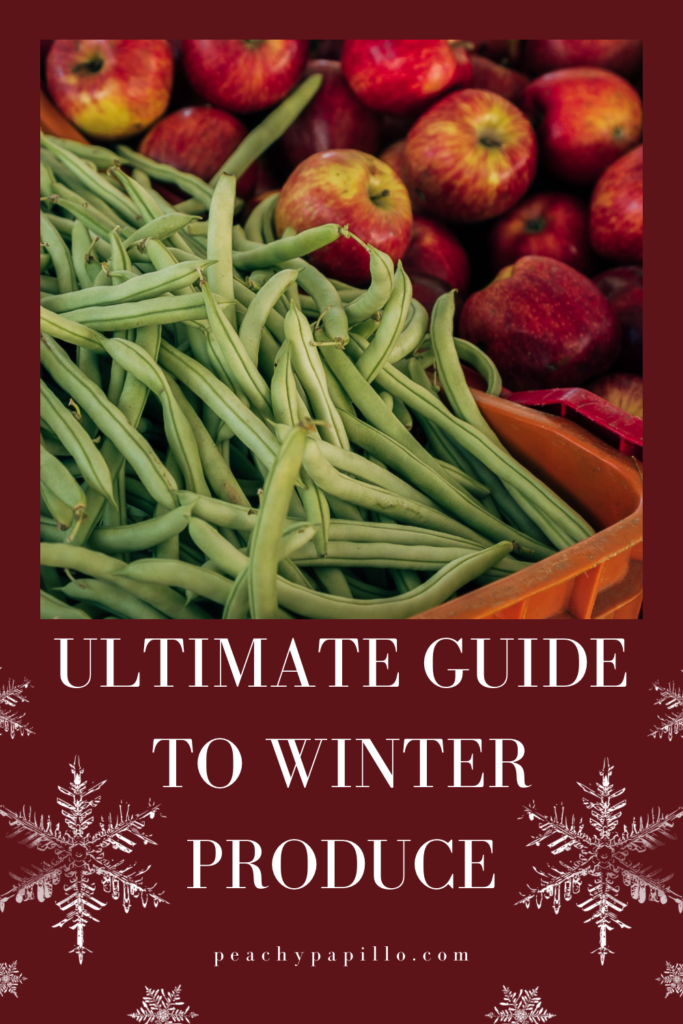

My name is Terran, and I love writing about how to improve one’s life through self-care, following your passions and surrounding yourself with the things you love. Subscribe to my email list to receive updates when I post and follow me along on the journey to a fulfilled, happy life.
If you enjoyed this post, please support me by sharing or leaving a comment below! Thank you for reading <3